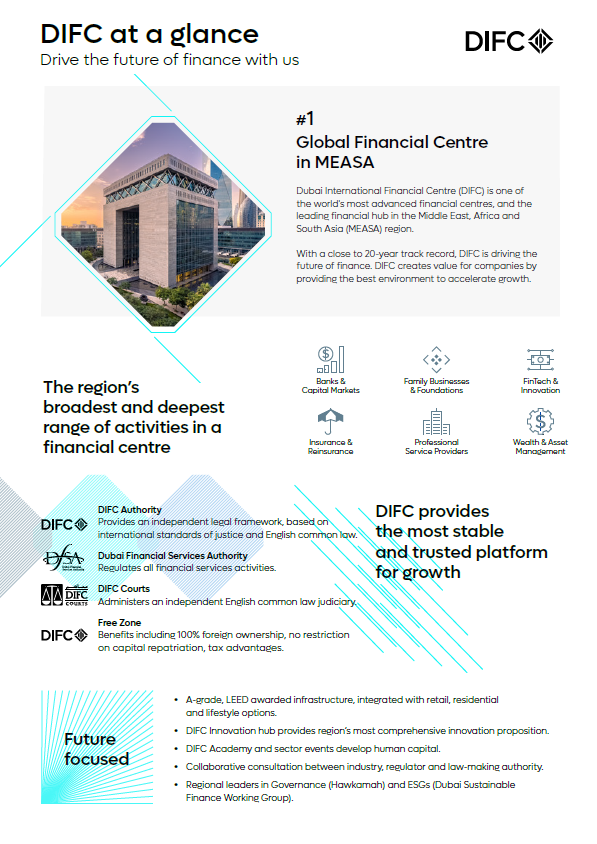
The beginning of digitisation and the enfolding of a concept of digital economies began in the 1990s, picking up speed during the dot com boom. The accelerated momentum was followed by a lull around 2001. At that stage, more established financial companies were early adopters – developing internet banking and mobile banking services.
Today, the principles remain the same – digital economies are created using technology to facilitate the exchange of information, goods and services, transactions, all of which needs to be enabled by finance and payment solutions.
So, how are digital economies created? They are enabled by governments, central banks, regulators and international financial centres that create frameworks, laws and regulations to stimulate, and in some cases, incentivise financial innovation in digital economies. Stimulation begins when financial organisations, FinTechs, startups and other companies are provisioned with a safe environment to test new ideas and solutions. This is where the concept of sandboxes, quite prevalent in the Middle East and North Africa region, come of use.
Another catalyst for digital transition is changing client and customer behaviours. We have seen digital technology gaining further impetus during the pandemic. Closer to home, Dubai – and the wider UAE – have been among the first in the developing world to embrace a digital strategy that fosters a culture of innovation.
Furthermore, a culture of innovation has been the foundation propelling Dubai International Financial Centre (DIFC) to build the region’s most comprehensive ecosystem for FinTech and innovation and is now currently home to over 800 companies ranging from startups to global unicorns.
At DIFC, innovation is a cornerstone to progress. Having consulted with over 4,900 companies that use the Centre as a catalyst for growth, the consensus remains over three trends that will drive the future of finance: Artificial Intelligence (AI), Data, and Cloud.
Implementing AI
In the finance industry, AI is more than an idea. Today, AI is extensively used to tackle financial crime. The Mastercard Global Cyber Forward programme that was launched with DIFC improves readiness to deal with cyber threats. Elements of the programme consider the potential of AI and builds on the introduction of a Threat Intelligence platform launched with the DFSA in 2020.

AI is a great enabler when streamlining business processes to make them more agile. For example, DIFC’s Dubai AI and Web3 Campus recently launched an Artificial Intelligence Transformation Programme, a highly customisable corporate accelerator, to future-proof businesses in the region by enhancing their AI capabilities. The initiative will further elevate Dubai’s abilities to compete at a global scale to harness talent, innovation, and grow its economy.
Data is king
The full extent of digitisation of financial services reflects the strength and quality of data possessed by an organisation to assess risk, for propensity modelling for product sales, pricing and creating marketing campaigns, building relationships and to aid decision making. However, while data needs to be extensive, the process of using this data has important considerations that include data privacy and governance. Given DIFC’s vision to drive the future of finance, the Centre recognised this early on and enacted the first data privacy regulations in the Middle East, Africa and South Asia region that consider AI and machine learning. As a financial centre of 20 years’ standing, DIFC’s data privacy laws are the most advanced in the region and reflect the highest international standards. In addition, the Centre has strong IP laws that allows the protection of ideas when firms want to develop innovative solutions.
Looking to the future, the ethical processing of data must consider AI and machine learning. DIFC is now creating use cases for testing through consultation, inspection, and supervision.
Cloud migration gathers momentum
As an application that facilitates access of remote storage and data assets, cloud technology should have been a catching trend for the finance and banking sector. However, cloud adoption in the financial industry is still relatively slow, purely because of the complexities involved. Mostly, early embracers of cloud technology have been new banks with a digital first approach or legacy banks that are undergoing a significant digital transformation. Migrating to a cloud platform requires education and cross-team integration to bring together product development teams, marketing, risk, compliance and IT. While many financial services players are still opting for data centres for data storage, several companies have chosen cloud technologies for their data storage needs.
From organisational restructures, operational efficiencies, informed decision making and product planning, the advantages of AI, data and cloud technology are numerous. Finance leaders and financial services providers have much to learn before they embark on this journey to drive strategic opportunities using innovation. What is clear is that innovation ultimately drives progress, and subsequently, the future of finance.



